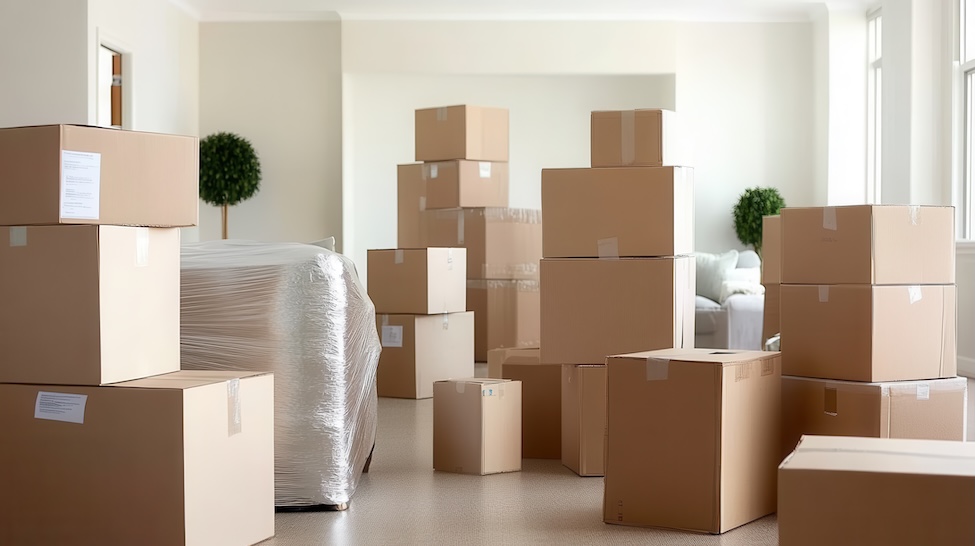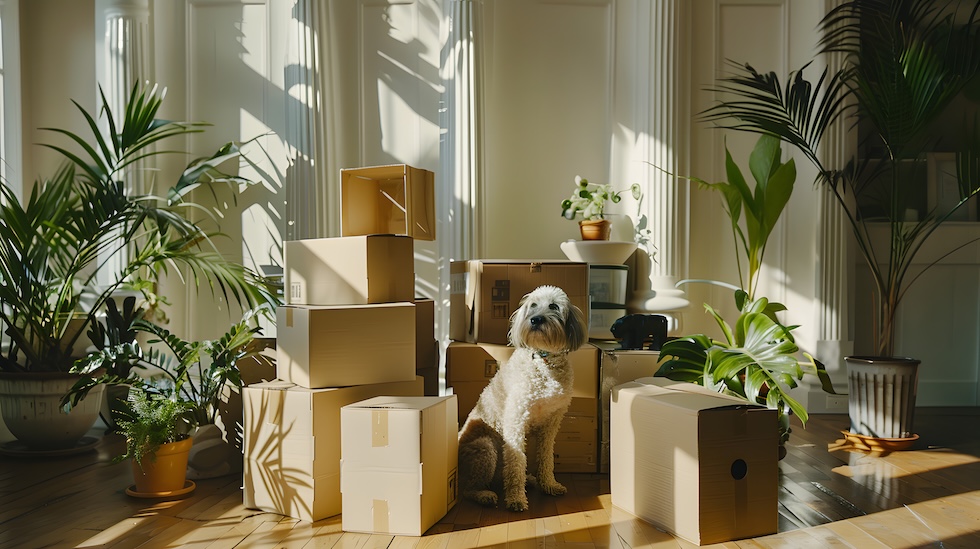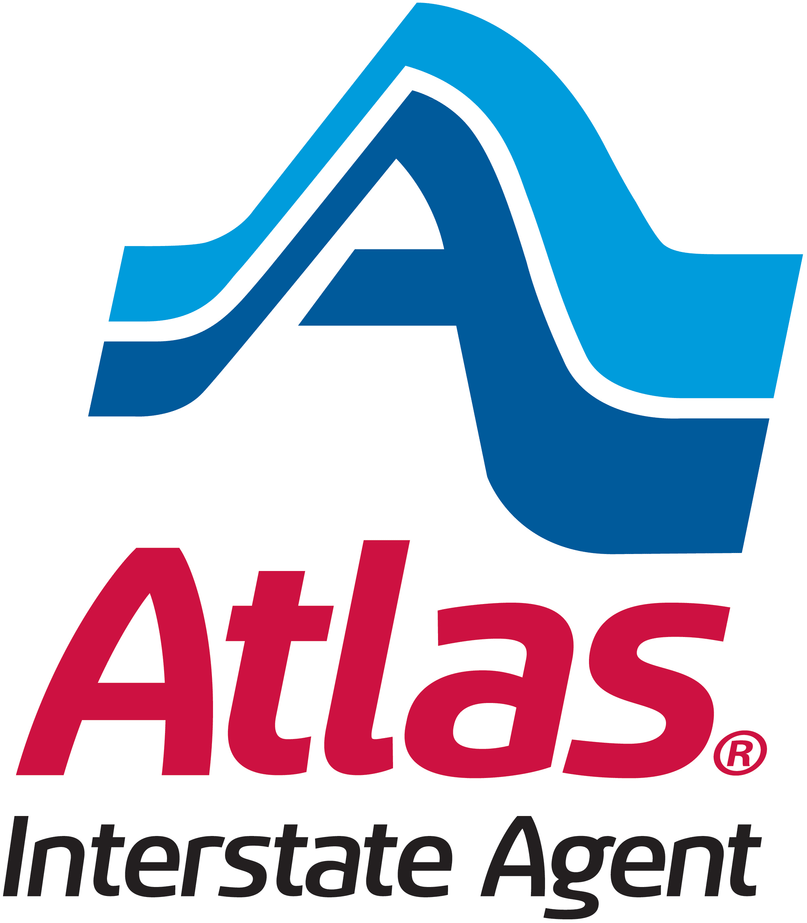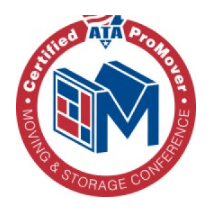Complete Process of Moving Guide: Expert Tips for a Smooth Relocation

Life’s biggest transitions often start with a single box. Moving to a new home represents more than just relocating belongings – it’s a journey that transforms spaces, routines, and possibilities.
After guiding thousands of successful moves over 110 years, we’ve discovered that even the most complex relocations become manageable through proper planning and strategic execution.
The secret lies in breaking down this significant life change into clear, actionable steps. From creating detailed timelines and budgets to implementing efficient packing strategies and coordinating essential logistics, each phase builds upon the last to create a smooth transition.
Our time-tested approach combines professional expertise with practical solutions for everything from valuable item protection to final property inspections.
Whether you’re planning months ahead or handling a quick transition, this thorough guide provides the framework for a successful move. We’ll explore proven methods for decluttering, strategic sorting, and organizing your new space – transforming what often feels overwhelming into a series of achievable milestones.
By focusing on methodical planning and proper execution, you’ll have the tools to turn your moving day into the first step toward an exciting new chapter.
Pre-Move Planning And Organization
The foundation of a successful move lies in thorough planning and methodical organization. Preparing for a move requires careful attention to detail and strategic planning.
Drawing from our century of hands-on experience, we’ve seen how proper preparation transforms what could be an overwhelming process into a well-orchestrated transition. Here’s your roadmap to moving success.
Timeline Creation And Milestones
Creating a detailed moving timeline is essential – start your moving journey 8 weeks before the big day – this sweet spot gives you enough time without creating unnecessary stress. Here’s a practical approach:
-
- Create a moving command center (digital or physical binder)
- Map out weekly tasks on a dedicated calendar
- Set clear deadlines for key activities like:
- Utility disconnections
- Final property inspections
- Room-by-room packing schedule
- Change of address notifications
Breaking down these tasks into bite-sized pieces makes the entire process feel more manageable and helps prevent those middle-of-the-night “did I forget something?” moments.
Budget Development And Cost Analysis
Moving involves more than just getting your belongings from point A to point B. To calculate your moving costs accurately, a realistic budget should account for:
-
- Essential moving costs:
- Packing materials and supplies
- Insurance coverage
- Utility deposits and connection fees
-
-
- Storage solutions (if needed)
- Often-overlooked expenses:
-
- Specialty item transportation
- Temporary housing arrangements
- Professional cleaning services
- Pet transportation
Pro tip: Set aside 10-15% of your total budget as a buffer for unexpected expenses. This safety net can make a substantial difference during your transition.
Professional Movers Vs. DIY Assessment
When comparing self-service and full-service movers, you’ll need to consider how the choice impacts both your wallet and peace of mind. Professional moving services bring:
- Expertise in handling valuable items
- Full insurance coverage
- Efficient loading techniques
- Professional equipment and tools
While DIY moving might look cheaper on paper, consider these hidden factors:
- Time investment required
- Equipment rental costs
- Physical demands and potential injury risks
- Vehicle fuel and maintenance
- Additional helping hands needed
Essential Documentation And Records
Creating a robust system for managing crucial paperwork saves countless headaches down the road. Keep these documents readily accessible:
-
- Moving essentials:
- Moving contracts
- Insurance policies
- Detailed inventory lists
- Moving-related receipts for taxes
-
- Personal documents:
- Medical records
- School transcripts
- Vehicle registrations
- Professional certifications
Smart tip: Create digital copies of all important documents and store them in clearly labeled folders on your device or cloud storage. This backup system ensures you’re never without critical information, even if physical copies are temporarily packed away.
Strategic Sorting And Decluttering
Moving offers a golden opportunity to transform your living space and lighten your load. With 30-40% of moving costs tied directly to the volume of items transported, smart sorting saves both money and stress. Let’s break down this essential pre-move process into manageable steps that set you up for success.
Room-By-Room Assessment System
Start your sorting journey in spaces you use less frequently – that spare bedroom or storage closet gathering dust. This practical approach keeps your daily routine intact while building momentum for bigger spaces.
Break each room into 4-5 manageable zones (like “desk area” or “closet”), and tackle one zone at a time. A focused 25-minute sorting session often accomplishes more than hours of scattered effort.
Keep, Sell, Donate, Discard Method
Master the art of decisive sorting with these four clear categories:
- Keep: Items you’ve used in the last 6 months or hold true sentimental value
- Sell: Quality items worth $20+ that could fund your move
- Donate: Gently used goods that could benefit others
- Discard: Damaged items or outdated materials
Create designated spaces for each category using clearly marked boxes or areas. Here’s a practical tip: every 100 pounds of items you declutter typically saves $50-100 in moving costs, making each sorting decision count toward your bottom line.
Digital Inventory Creation
Transform your moving game with a smart digital tracking system. Snap quick photos of valuable items and build a simple spreadsheet with these essential details:
- Item description and condition
- Serial numbers for electronics
- Estimated value for insurance
- Designated room in new home
- Special handling instructions
This digital record becomes your moving command center – protecting your interests with insurance documentation while creating an efficient roadmap for unpacking.
Pre-Move Sale Organization
Turn unwanted items into moving cash with a strategic pre-move sale. Start preparations 3-4 weeks before moving day to maximize results. Group similar items together, research current market values on sites like eBay or Facebook Marketplace, and price items at 1/3 of retail for quick sales.
For best results:
- Schedule sales for Saturday mornings
- Advertise on multiple platforms (social media, community boards, local apps)
- Prepare plenty of change and payment options
- Set up clear category zones with visible pricing
- Have a backup plan for unsold items
Professional movers consistently report that thorough decluttering can reduce moving costs by 15-25%. Each item you sort now means less to pack, move, and unpack later – creating a streamlined path to your fresh start. Remember, the goal isn’t just to move your belongings – it’s to move forward with purpose.
Efficient Packing Strategies
Moving doesn’t have to be overwhelming. After helping thousands of families relocate over the past century, we’ve developed packing tips for moving that not only protect your belongings but make settling into your new home remarkably smooth. Here’s what really works.
Room Priority System
Smart packing starts with the right sequence. Begin with spaces you rarely use – those storage areas, guest rooms, and spots where seasonal items hibernate. This way, your daily routine stays intact while making steady progress. Save your kitchen, bathroom, and bedroom for last since you’ll need those essentials until moving day.
Your “pack first” list should target:
- Out-of-season clothing and decorations
- Books and media collections
- Artwork and wall decorations
- Extra linens and towels
- Garage and storage items
Professional Packing Materials Selection
Think of quality packing materials as insurance for your belongings during transit. While budget-friendly alternatives might seem appealing, professional-grade materials are worth every penny in preventing damage. Start by locating moving boxes and gathering these essential supplies:
- Strong moving boxes (various sizes)
- Heavy-duty packing tape
- Bubble wrap for fragile items
- Clean packing paper for wrapping
- Specialized containers for clothing and artwork
Pro tip: A common mistake is overfilling boxes. Pack heavier items in smaller boxes and lighter items in larger ones – your back will thank you later.
Valuable Items Protection Protocol
Those irreplaceable treasures deserve extra care. Start by taking detailed photos of valuable pieces before packing – this documentation proves invaluable for insurance purposes.
For extremely fragile items, employ the double-boxing technique: wrap the item carefully, place it in a smaller box with cushioning material, and then nest that box inside a larger one with additional padding.
For electronics, the original packaging is gold. If that’s not available, specialized electronics boxes with anti-static materials offer the next best protection. Remember, a little extra time spent protecting valuable items can prevent hours of heartache later.
Box Labeling And Organization System
A clear labeling system turns unpacking from chaos into a well-orchestrated symphony. Every box should display:
- Room destination
- Brief content list
- Handling instructions (fragile, this side up)
- Box number matching your digital inventory
Try this pro move: Color-code your labels by room. Blue for bedrooms, red for kitchen items, green for living spaces. When movers can instantly identify where each box belongs, unloading becomes significantly faster and more efficient.
The magic of proper packing lies in creating a system that works backward from unpacking. When each box tells its own story – what’s inside, where it goes, and how to handle it – you’re not just moving items; you’re crafting an efficient transition into your new home.
Logistics Coordination
Moving involves many sophisticated details, and getting them right makes all the difference. Let’s explore the key logistics that transform a potentially stressful relocation into a well-orchestrated experience.
Service Provider Communication
Building a strong partnership with your moving service provider creates the backbone of a successful move. At Nelson Westerberg, we’ve revolutionized this process through our video survey system – a tool that delivers precise item listings and crystal-clear pricing. Here’s your timeline for success:
Start 8 weeks before your move date with an initial consultation covering:
- Complete inventory assessment with room-by-room documentation
- Specialized handling needs for delicate or valuable items
- Precise scheduling windows that work for your timeline
- Access requirements including parking permits and elevator reservations
- Site-specific challenges at both locations
Utility Transfer Management
Smart utility management keeps your life running smoothly during the transition. Create your master utilities checklist including:
- Electric service
- Gas connection
- Water service
- Internet and cable
- Waste management
- Security systems
Here’s a pro move that saves headaches: Contact providers two weeks before moving day, and schedule activation at your new home 24 hours pre-arrival. This buffer ensures everything’s working when you walk through the door.
Insurance Coverage Review
Moving insurance isn’t just paperwork – it’s peace of mind in motion. While basic liability coverage comes standard with professional moves, take a moment to evaluate your specific needs based on:
- The total value of your belongings
- Moving distance and route considerations
- Seasonal weather patterns along your route
- High-value items requiring extra protection
Smart tip: Create a digital record of valuable items with detailed photos and descriptions before moving day. This simple step proves invaluable if you need to file a claim.
Special Items Transportation Planning
Unique items need unique solutions. Our Pro-certified operators bring 15+ years of hands-on experience handling everything from grand pianos to priceless artwork. Whether you’re transporting a fish tank or relocating antique furniture, here’s your special items checklist:
- Identify pieces requiring custom crating or specialized equipment
- Build in extra time for careful dismantling and precise reassembly
- Secure climate-controlled transport for temperature-sensitive items
- Obtain necessary permits for oversized items well in advance
- Coordinate with building management for dedicated elevator time
Early planning transforms complex logistics into manageable steps. While this might seem overwhelming, remember you’re not alone – professional movers handle these challenges daily and bring expert strategies to every situation.
Moving Day Execution
The big day has arrived – and with proper preparation, your move can run like clockwork. Drawing from over 100 years of hands-on moving experience, we’ve refined every detail to transform what could be a stressful day into a seamless transition.
Morning Preparation Checklist
Start your moving day strong with these essential preparations before the moving team arrives:
- Create a comfort station with water bottles, energy bars, and light snacks
- Designate a secure spot for must-have items (medications, important documents, keys)
- Clear all walkways and doorways of potential obstacles
- Remove small rugs, pictures, and loose items from walls
- Position your essential items box near the front door
A well-organized space allows our professional movers to work efficiently, often reducing both moving time and costs.
Loading Sequence Protocol
The way we load your belongings makes a measurable difference in their safety during transit. Our Pro-certified moving specialists follow a time-tested loading sequence that’s proven to protect your items while maximizing truck space.
Here’s our proven approach:
- Large furniture pieces form the base layer
- Heavy boxes create stable wall sections
- Medium-weight items fill the middle spaces
- Lightweight and fragile items rest securely on top
- Special padding techniques protect corners and surfaces
- Strategic strapping prevents shift during transport
Essential Items Box Management
Think of your essential items box as your first-night survival kit. Keep this box in your personal vehicle – you’ll want easy access to these items at your new home:
- Personal Care: Toiletries, medications, toilet paper
- Clothing: One change of clothes per family member
- Tools: Basic toolkit, box cutter, scissors
- Electronics: Phone chargers, power strips
- Cleaning: Multi-surface cleaner, paper towels
- Kitchen: Paper plates, plastic utensils, bottled water
- Documents: Moving paperwork, new home documents
Final Property Inspection Guide
Before turning the key one last time, let’s ensure nothing gets left behind. Our systematic inspection process includes:
- Interior Check
- Start at the uppermost floor, furthest room
- Open and check all built-in cabinets and drawers
- Look behind every door and inside closets
- Check all window sills and ledges
- Inspect basement corners and utility areas
- Exterior Review
- Walk the full perimeter of the property
- Check storage sheds and garage spaces
- Inspect outdoor storage areas
- Document property condition with photos
- Verify all exterior doors are secured
- Final Steps
- Confirm all utilities are properly shut off
- Close and lock all windows
- Set temperature appropriately
- Leave spare keys as arranged
- Document final meter readings
Remember, while moving day brings significant change, having seasoned professionals by your side transforms the experience. Our proven expertise means you can focus on the excitement of your new beginning rather than the logistics of the move itself.
New Home Setup Strategy
Moving day is done, and now comes the exciting part – turning your new space into a true home. After helping thousands of families settle in over the past 30 years, we’ve developed a proven setup strategy that makes the process smoother and more manageable. Here’s how to transform those empty rooms into your perfect living space.
Priority Unpacking System
Think of unpacking like building a house – you need a solid foundation first. Start with the spaces that keep daily life running smoothly. The kitchen deserves immediate attention – set up basic cooking equipment and organize essential kitchenware to prepare simple meals.
Next up is the bathroom, where having toiletries and fresh towels ready makes a significant improvement. Once these basics are covered, tackle bedroom setup with bed assembly and enough clothing to get through the first week.
Room Organization Method
Each room needs its own game plan for maximum efficiency. Large furniture pieces act as anchor points that define traffic flow and activity zones. In bedrooms, the bed position sets the tone – other pieces naturally fall into place around it.
For living areas, arrange seating to create conversation-friendly spaces that feel welcoming. A thoughtful furniture layout now saves countless hours of rearranging later.
Immediate Necessities Setup
The first 24 hours are crucial for establishing a livable space. Focus on these essential elements:
- Bathroom basics: shower curtain, toiletries, fresh towels, toilet paper
- Kitchen essentials: coffee maker, basic cookware, plates, utensils
- Bedroom comfort: assembled bed, fresh linens, bedside lighting
- Safety features: working smoke detectors, clear pathways, basic lighting
Storage Solutions Implementation
Smart storage transforms chaos into calm. Start by mapping out each room’s storage potential:
- Utilize vertical space with shelving and over-door organizers
- Create designated zones for frequently used items
- Set up temporary storage solutions for immediate needs
- Plan long-term organization systems based on your daily routines
A well-planned storage strategy in week one prevents months of shuffling items around later. Take this opportunity to establish organization systems that match your lifestyle.
While the temptation to unpack everything at once is strong, remember that thoughtful organization creates lasting efficiency. Let each room adapt naturally as you discover how the space works best for your family’s needs.
Frequently Asked Questions
- How far in advance should I start planning my move?
Here’s what our 100+ years of moving experience has taught us: start planning at least 8 weeks before your move date. Think of it as building blocks – you’ll need time for sorting through belongings, gathering supplies, and coordinating with professional movers.
Moving a 3-bedroom home? Add another 2-4 weeks to your timeline. The extra cushion makes a significant impact, especially when unexpected tasks pop up (and they usually do).
- What items should I avoid packing in a moving truck?
Safety comes first – keep hazardous materials out of the moving truck. This includes everyday items like cleaning supplies, paint cans, aerosols, propane tanks, and ammunition. Your valuable items (think jewelry, important documents, medications) deserve special attention – keep these with you during the move.
A word about perishables and plants: they typically don’t fare well during long-distance transport. Not sure about a specific item? Our moving specialists can help you make the right call.
- How can I accurately estimate moving costs?
The most precise way to nail down your moving costs starts with a detailed video survey of your home. This virtual walkthrough lets our team assess everything that impacts your quote – from the volume of your belongings to any special handling needs.
Key factors that shape your final cost include distance (local vs. long-distance), timing (summer moves typically cost more), extra services like packing, and insurance coverage. Our video survey system delivers clear, no-obligation quotes crafted precisely for your specific situation.
- What’s the most efficient way to pack fragile items?
Success starts with the right supplies: sturdy boxes, quality bubble wrap, packing paper, and specialized dividers for dishes and glassware. When it comes to packing glasses for a move, proper technique is crucial for preventing breakage.
Group similar items together, using the box-within-a-box technique for your most delicate pieces. Fill every gap with crushed paper – movement is your fragile items’ worst enemy. Mark these boxes as “FRAGILE” on all sides (yes, even the top).
Got family heirlooms or valuable antiques? Our professional packing services offer that extra layer of protection and peace of mind.
- How do I handle unexpected delays during the moving process?
Stay connected with your moving coordinator – they’re your go-to resource when plans need adjusting. Smart preparation means having a Plan B for temporary housing and flexible utility schedules. Keep a “survival kit” of essentials easily accessible.
Our TRAXX® system provides real-time updates on your shipment’s location and status, helping you adapt quickly when timing shifts. Remember, even the best-planned moves can face surprises – it’s how we handle them that matters.
Conclusion
Moving doesn’t require perfection – it thrives on smart preparation and steady organization. Breaking down your relocation into clear phases transforms an overwhelming project into bite-sized, manageable tasks:
- Strategic planning and sorting
- Systematic packing
- Coordinated moving day execution
- Organized unpacking and settling in
Here’s what 100+ years of moving experience has taught us: success comes from balancing structure with flexibility. While having a solid game plan matters, being ready to adjust when surprises pop up matters just as much.
The foundation of every smooth move rests on two key pillars:
- Proactive planning that starts 6-8 weeks before moving day
- Clear communication with everyone involved – from family members to moving professionals
Think about this: over 30 million Americans successfully relocate each year. That’s thousands of families starting fresh in new homes every single day. With the right preparation and support system in place, your move becomes less about stress and more about stepping confidently toward your next chapter.
Your new beginning is just around the corner – and with proper planning, you’ll be ready to embrace it. Take that first step, stay organized, and remember that every successful move starts with a single box packed.
Related Articles
Where to Move from Texas: Top 10 States for Ex-Texans in 2025

Where to Move from Texas: Top 10 States for Ex-Texans in 2025 Record numbers of Texans are exploring life beyond state lines, driven by soaring housing costs, evolving career landscapes, and the search for new lifestyle opportunities. The decision to leave Texas stirs intense emotions – after all, the Lone Star State‘s unique culture and […]
Read MoreHow to Move a House from One Location to Another: Planning to Completion

Relocating an entire house might seem like something out of a movie, but this remarkable feat of engineering happens more often than you’d think. From preserving historic mansions to saving beloved family homes from coastal erosion, house moving represents the intersection of cutting-edge engineering and practical problem-solving. With project costs typically ranging from $18,000 to […]
Read More




